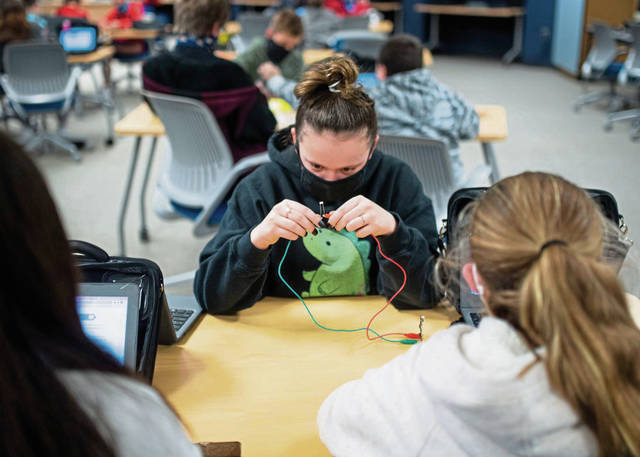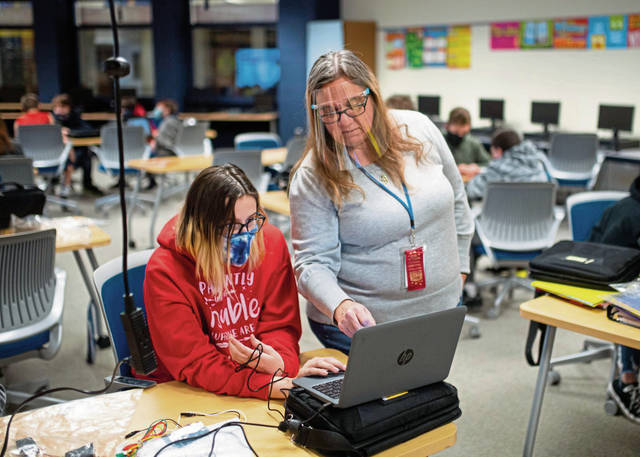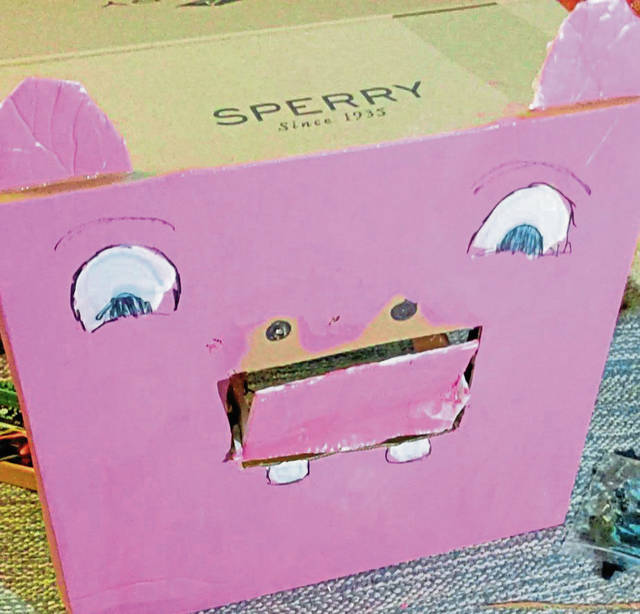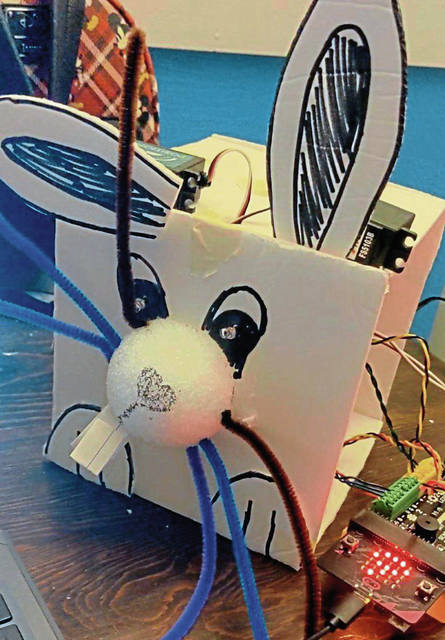Students design cardboard pig that can eat and more in new robotics class at Apollo-Ridge
Apollo-Ridge student Amber Earnest’s drawing titled “Petting Zoo Pig” on cardboard is no ordinary swine.
She devised a way to make its mouth move with the help of grant-supported equipment for the first robotics class at the high school.
ABC Create, a regional collaboration of educators devoted to student technological fluency, donated Hummingbird Robotics kits, developed by a Pittsburgh company, BirdBrain Technologies, to the district for about 10 students to work on their robots during mostly virtual instruction last semester. The Apollo-Ridge Education Foundation sponsors the district in ABC Create and provided money for other robotics equipment for the current semester used in a graphic arts class.
This year’s first attempt at a high school robotics class provided an important steppingstone for the district to continue offering robotics in the classroom.
Earnest, who developed her cardboard pig robot as well as a bunny robot with ears that move, plans to pursue computer engineering.
“This class allowed me to combine both of those interests in designing, building and programming my robots,” she said.
“I felt so rewarded after every project seeing the product of my own work and ideas,” Earnest said.
Several years ago, ABC Create introduced robotics for the language arts program at Apollo-Ridge Middle School, said Cris Kostiuk, president of the Apollo-Ridge Education Foundation and an administrative assistant for the district. Robotics has been used for middle school students to design characters and scenes in books, making “writing come alive,” she said.
The ABC grant provided the equipment for “Robotics and Physical Computing” offered for the first time to high school students during the fall semester. The class goes a step beyond earlier classes using robotics at the middle school and is “more real-world focused,” Kostiuk said.
Angel Stahl, the business computer information technology teacher at the Apollo-Ridge middle and high schools, is the teacher for new high school robotics class.
“Technology is everywhere today, from flushing toilets to motor vehicles,” she said. “The more students understand how each microprocessor works, the more they learn.”
Robotics technology can be understood if people have access and want the knowledge, Stahl insisted: “Anyone can be a coder. Right now grandma could learn to program micro bits.”
Students need to be aware of how technology is changing and will continue to be a factor in everyone’s life, Stahl said.
The new high school class went well enough for the district to plan to offer the robotics class again.
While a good deal of instruction was virtual for the first half of the year, Stahl gave each student a robotics kit along with glue tape, pipe cleaners and other supplies they worked with at home.
Students created simple mechanisms that could turn on lights and make cardboard creations move. Earnest made animals out of cardboard including a pig that moved its mouth to eat. Other students built a maze and a catapult out of cardboard with mechanically moving parts.
“Creating the robots gives them an opportunity to work independently and to explore outside of the box,” Stahl said.
“They have to think on their own,” she said.
Failures were successes. Students learn from trial and error.
“The design process is about constantly cycling through, always going through what was done and understanding what has worked,” she said.
Stahl currently teaches seven different STEM classes.
“We are a small rural school and are able to offer these types of classes, exposing our students to different technologies.”
Remove the ads from your TribLIVE reading experience but still support the journalists who create the content with TribLIVE Ad-Free.




